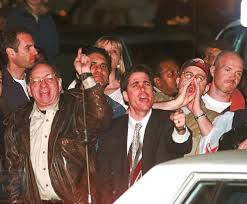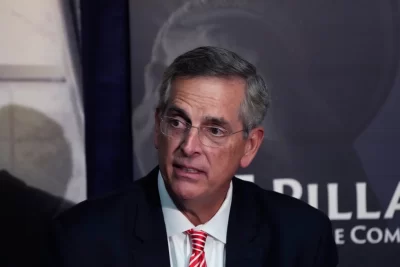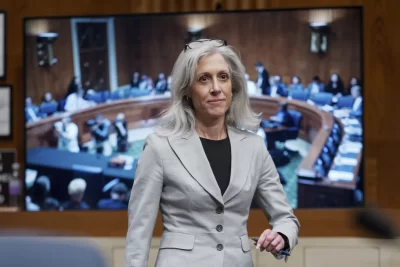
NEW YORK — A dog’s plaintive wail. A courtroom couplet-turned-cultural catchphrase about gloves. A judge and attorneys who became media darlings and villains. A slightly bewildered houseguest elevated, briefly, into a slightly bewildered celebrity. Troubling questions about race that echo still. The beginning of the Kardashian dynasty. An epic slow-motion highway chase. And, lest we forget, two people whose lives ended brutally.
And a nation watched — a nation far different than today’s, where the ravenousness for reality television has multiplied. The spectator mentality of those jumbled days in 1994 and 1995, then novel, has since become an intrinsic part of the American fabric. Smack at the center of the national conversation was O.J. Simpson, one of the most curious cultural figures of recent U.S. history.
Simpson’s death Wednesday, almost exactly three decades after the killings that changed his reputation from football hero to suspect, summoned remembrances of an odd moment in time — no, let’s call it what it was, which was deeply weird — in which a smartphone-less country craned its neck toward clunky TVs to watch a Ford Bronco inch its way along a California freeway.
“It was an incredible moment in American history,” said Wolf Blitzer, anchoring coverage of Simpson’s death Thursday on CNN. What made it so — beyond, of course, tabloid culture and the fundamental news value of such a famous person accused in such brutal killings?
THE SAGA ANTICIPATED 21ST CENTURY MEDIA
In an era when the internet as we know it was still being born, when “platform” was still just a place to board a train, Simpson was a unique breed of celebrity. He was truly transmedia, a harbinger of the digital age — a walking, talking crossover story for multiple audiences.
He was sports — the very pinnacle of football excellence. He was stardom, not only for his athletic prowess but for his Hertz-hawking run through airports on TV and his acting in movies like “The Naked Gun.” He embodied societal questions about race, class and money long before Nicole Brown Simpson and Ronald Goldman were stabbed to death on June 12, 1994.
Then came the saga, beginning with the killings and ending — only technically — in a Los Angeles courtroom more than a year later. The most epic of American novels had nothing on this period of the mid-1990s. Americans watched. Americans talked about watching. Americans debated. Americans judged. And Americans watched some more.
The generations-old chasm between white Americans and Black Americans was not helped by Time magazine’s decision to tactically darken Simpson’s mugshot on its cover for dramatic — and, many said, racist — effect. For those who lived through that period, it’s hard to remember much in the public sphere that wasn’t crowded out by the O.J. storyline and its many components, including the subsequent civil trial that found Simpson liable for the deaths. One newspaper even ran a series of possible endings to the storyline, written by mystery novelists.
Sure, people were saying different things. But it was, inarguably, a national conversation.
The nation — and its media — are far more fragmented now. Rarely these days do Americans gather around the virtual campfire for a common experience; instead, small brush fires draw niche crowds in virtual corners for equally intense, but smaller, common experiences. This week’s eclipse was a rare exception.
In 1994, everyday real-time, wall-to-wall coverage was still emerging. Sure, we had Walter Cronkite during the Kennedy assassination and again during the chaotic 1968 Democratic National Convention. And the first Gulf War in 1991 firmly cemented live-TV expectations. But coverage of the Bronco chase and the trial fed the appetite in a way no other event did. Even now, such universal viewership is rare.
“The media we consume is much more diffuse now. It’s so rare that we’re all glued to the same spectacle,” said Danielle Lindemann, author of the 2022 book “True Story: What Reality TV Says About Us.”
“In 1994 we were watching our television sets and following along with news coverage,” Lindemann, a professor of sociology at Lehigh University, said in an email. “But there wasn’t that parallel discourse happening via social media.”




